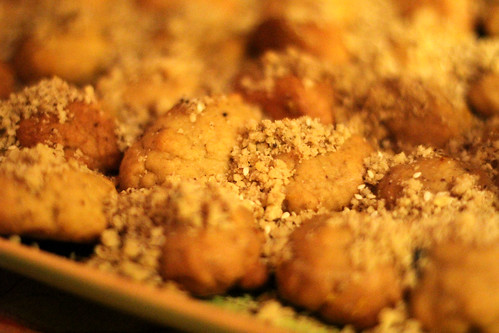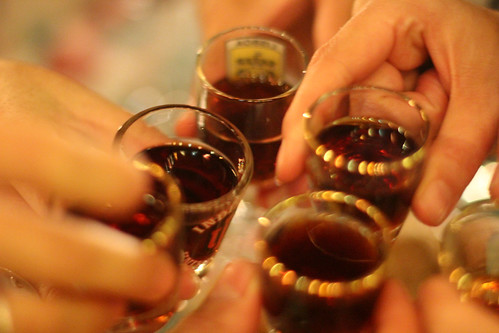Last week was Eid al-Adha, the Feast of the Sacrifice. To commemorate the moment when Abraham was prepared to sacrifice his son Isaac at God's command, Muslims sacrifice an animal and turn it into dinner. In Djibouti, this would almost certainly be a goat, so that's what we ate!
Now, not too many people have heard of Djibouti, barely the size of the NYC metro area. During the Opening Ceremony of the Olympics a few months ago, all Matt Lauer could say about it was, "There are some countries whose name makes you smile." Squeezed into the intersection of Ethiopia, Eritrea, and Somalia, and across the Red Sea from Yemen, it's an invention of colonialism from when the French wanted a secure place to guard passage to the Suez Canal, and it remains host to French and US soldiers.
As far as the food, Djibouti shares with its neighbors a penchant for injera, the spongy crêpe-like flatbread made from a flour called teff, though the use of rice is a nod to influence from nearby Arab lands. Despite its seaside location, meat seems to be preferred. And it's all eaten by hand from communal platters. I should point out that there's not a whole lot of info on Djiboutian cuisine online in English or even French, so this meal is the best I could do based on what I could find!
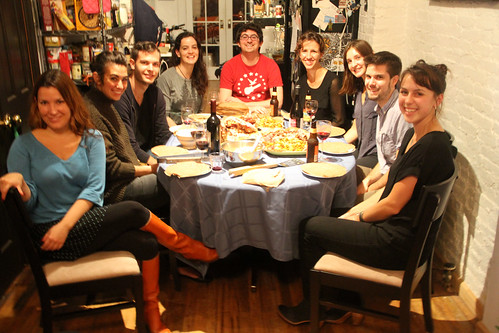
We had a fun crowd for the dinner: Sarah, our neighbors Amanda and Henry, Sarah-Doe, Zhenya, Raven, Dan, and Claire! Ed (remember him from Armenia?) showed up a bit later.
Cabri farci, façon afar | Stuffed goat, Afar style | Roasting (scroll to #11), rice stuffing (minus lamb), video
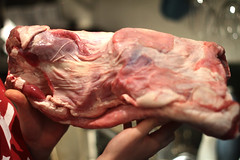
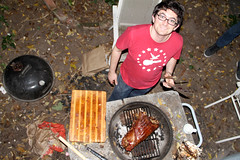
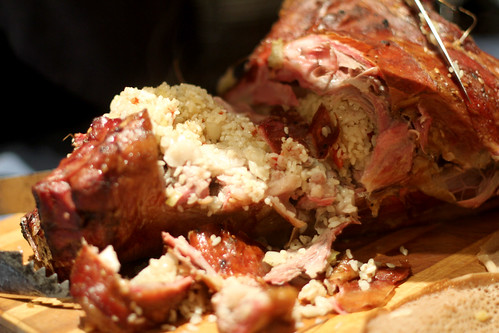
The Afar are one of the two main ethnic groups of Djibouti, and the more nomadic of the two. Apparently their famed form of hospitality is to stuff a goat with rice and spices, and roast it over a fire.
Goat in chunks is fairly easy to come by in NYC, but finding a more whole version during Eid al-Adha proved a challenge. After some calling around, Fertile Crescent came through. I emerged from the subway at Atlantic and Flatbush staring down the new and utterly strangely post-apocalyptic Barclays Center; 30 seconds later I was trying to get the attention of a butcher arguing in Arabic with a customer. We ended up deciding that a whole 30-pound goat would be excessive, so I got him to trim off the legs and I walked home with the midsection.
With little indication of how to prepare the rice, other than watching a video that advises oil and spices, I adapted a more standard meat-and-rice recipe, hoping that the generous apportionment of tomatoes and onions, plus drippings from the meat, would provide enough moisture to cook the short grain Egyptian rice I picked up.
Then it came to lacing the darn thing up. Apparently they use wire, and so did I, which mostly worked. I employed a staple gun to help graft a flap of skin to the wide opening at the end of the ribcage, and surprisingly it mostly held. On went a quick rub of oil and salt, and in went the rice! Then I built a wood-and-charcoal fire (with hyperlocal kindling scavenged from the back yard!) and let it burn down for about an hour. Using the technique I learned from the Cuban pork shoulder, I pushed the coals to the side (and added the innovation of foil above the coals that had fallen in the center) to allow for indirect heat, and on went the goat! I moved it only twice in two hours for fear of losing too much rice.
The result was a surprising success. Seven pounds of goat midsection doesn't offer much meat, but the meager helpings are really tasty without being too rich, and definitely enhanced by the smoke. Speaking of, while the rice was a bit on the al dente side, it did have a marvelous campfire flavor.
Injera | Sourdough teff pancakes | Recipe: Original, simplified version below
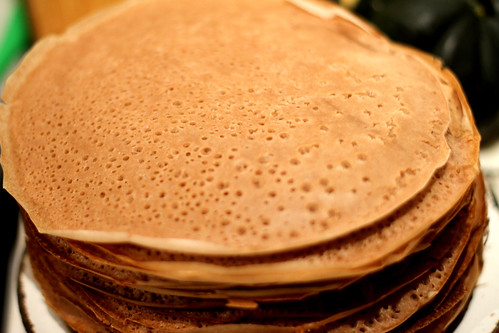
With 194 meals to make it through, rarely do I test a recipe before the dinner. But having never made injera and having seen so many different recipes, I did a trial run a few weeks back. The spontaneously fermented one — mix up ingredients, let wild yeasts land, then cook — was too sticky and tasted suspiciously and unpleasantly of cheese. But this one, using a known sourdough starter and with all sorts of "they don't actually use it" stuff like self-rising flour, turned out amazingly, and I chose it. Many people on the surprisingly long and controversy-ridden string of comments claimed that though the technique is non-traditional, the results replicate the on-the-ground experience, and I guess that's what I'm going for!
I'm so grateful for that recipe but I find it long and hard to follow, so I pared it down and added a bit of my experience in my version of the recipe which is at the end of this post. Simply put, if you have a hankering for injera and can get your hands on teff (Bob's Red Mill makes it and many Whole Foods Markets sell it) and a good starter, I can't imagine a better result. Tangy and nutty, moist and spongy but with a good tooth, so easy to tear off a piece for grabbing a bite of food, this is just really tasty stuff. It just takes a while to make them one pancake at a time!
Lentilles djiboutiens | Lentils with chili and spices | Recipe
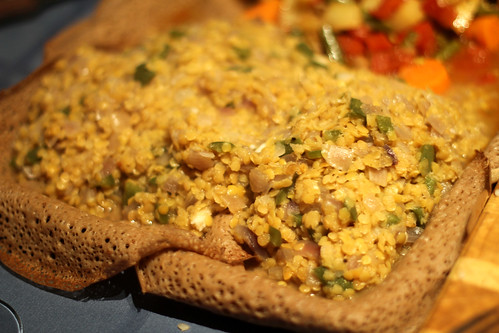
My authenticity-dar is kind of spinning with this recipe — no native name given, doesn't specify the type of lentils, etc. — but you know what, it turned out to be really, really good. I used red lentils (which turn yellow when you cook 'em) and I'm glad I did, because it turned out nice and soft in a way that I'm not sure black/green lentils could have. Despite the high proportion of chilies, it wasn't too spicy.
If you make this, note that instead of draining the lentils, saving the water, and then putting it all back together, I just started sauteeing the onions and chilies in a separate pan, added them to the par-cooked lentils, threw in a bit more water, and cooked from there. Simpler and you can't argue with the tasty results!
Yetakelt W'et | Spiced vegetable stew | Recipe
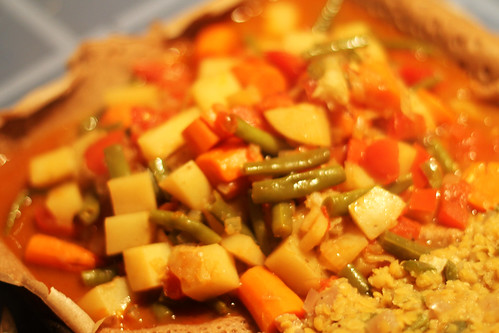
This dish of assorted veggies was totally okay, but really nothing spectacular. Maybe veggie dishes are just not a big thing in Djibouti, or maybe this recipe's just a dud. Stick to the lentils and meat!
The conversation turned to the approaching storm — which has passed by the time I write this, thankful to have power and internet and glad the only inconvenience is a lack of subway service — and transitioned into an outside party!
We were going to do the next meal, Dominica, up in Boston, but given the post-Sandy mess of things, we'll be doing it from home.
And without further ado, the recipe:
Injera, adapted from Burakaeyae
2 cups teff starter
2 cups teff
3 cups self-rising flour (store-bought, or make your own: 3 cups all-purpose flour plus 4 teaspoons baking powder and 1 teaspoon salt)
Night before: Best done in big glass bowl. Mix starter and 2 cups of teff. Knead it a bunch, like 10 minutes. Will be really dry. Then add luke-warm water, 1/4 cup at a time, thoroughly mixing each time. Mix until it's watery. Test: dip hand in batter, should slip off quickly only leaving a thin residue. Let rest overnight.
Next morning: Should see three layers with liquid in middle. Stir. Save one or two cups for next time if you plan to make again. Blend this starter mix, either 1 cup at a time in the blender, or with an immersion blender. Blend until you only feel a very small amount of grit. Pour this into a large pot or other big vessel.
In your now-empty glass bowl, put the self-rising flour. Add warm water, mixing by hand until soupy. Blend again, should take less time than the teff.
Scrape the flour batter into the teff batter. Mix thoroughly with your hand. If it doesn't pass the thin-residue test, add a bit more water until it does. Cover with a lid and let rise, longer the better. Then put in fridge for at least 45 minutes.
Before dinner: Give yourself plenty of time, it can take at least a half hour to make them all. They don't need to be hot so you can do it in advance.
Heat up a pan; non-stick will make your life easier, something with low edges like a crepe pan is best. Get it really good and hot, sprinkle on a bit of salt, then pour some batter on. Quickly tilt around to fill the diameter of the pan; it may take a few tries to get the right amount so it's not too thin or too thick. Cover with a lid to get it to steam a bit.
Once it crisps a bit on the edge, use something wide like a super-wide spatula or a flat baking sheet to remove. (If it's non-stick you might be lucky and able to just slide it off). Let cool for a bit on a clean cloth napkin or towel or cooling rack while you make the next injera, then move onto a plate for keeping. You need to let each injera cool on its own for a bit before putting on the pile to prevent sticking.
Sprinkle on a bit more salt every time, not only is this good for flavor but apparently it helps make the bubbles.
Photos by Laura Hadden, who's looking forward to no more puns on this country's name.
 Dominica is a tiny little island country, in the middle of that north-south string of Caribbean islands. You'd be forgiven for thinking it's the Spanish-speaking half of Hispaniola, but no, that's the Dominican Republic. They both use the adjective Dominican; to assert that you mean this beautiful, actively volcanic, lush-in-parts island, place the stress on the third syllable, domiNIcan.
Dominica is a tiny little island country, in the middle of that north-south string of Caribbean islands. You'd be forgiven for thinking it's the Spanish-speaking half of Hispaniola, but no, that's the Dominican Republic. They both use the adjective Dominican; to assert that you mean this beautiful, actively volcanic, lush-in-parts island, place the stress on the third syllable, domiNIcan.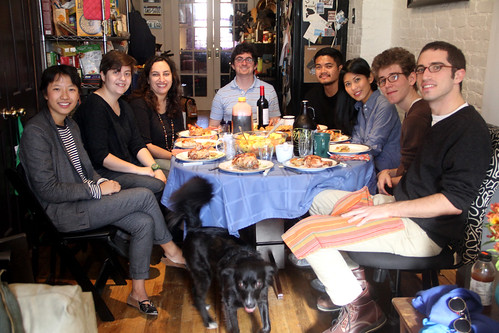

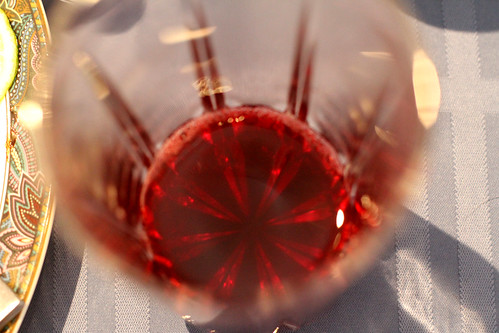
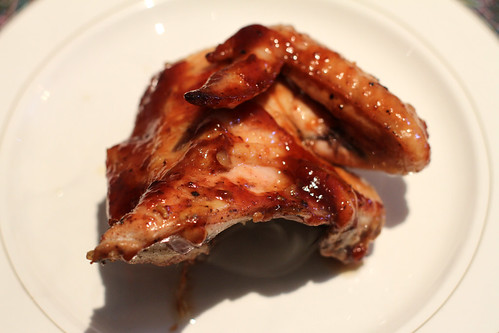
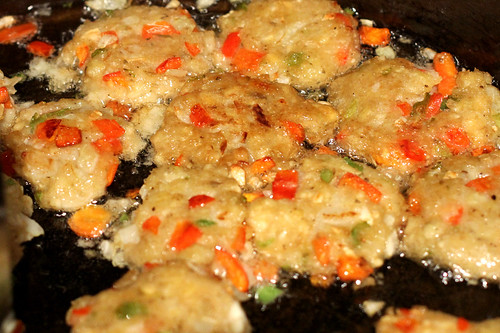








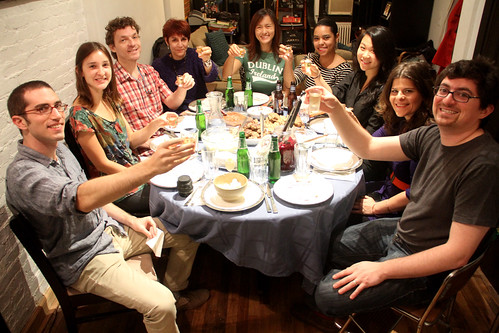
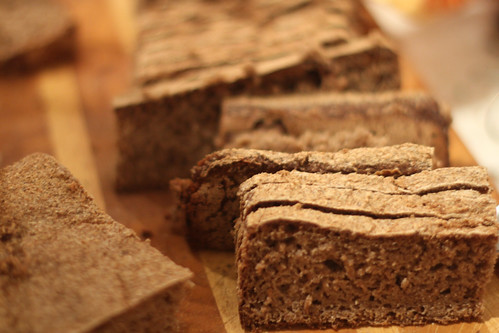

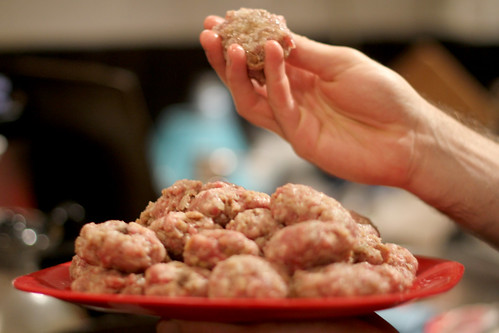
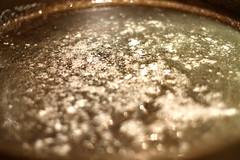
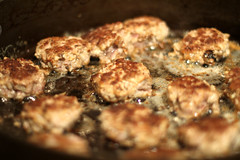
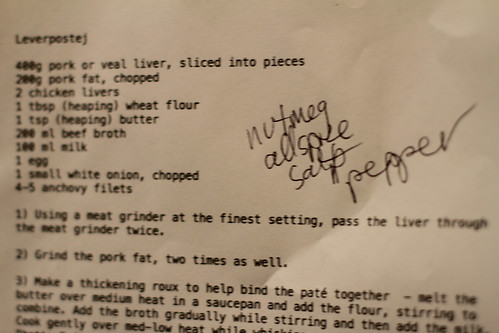
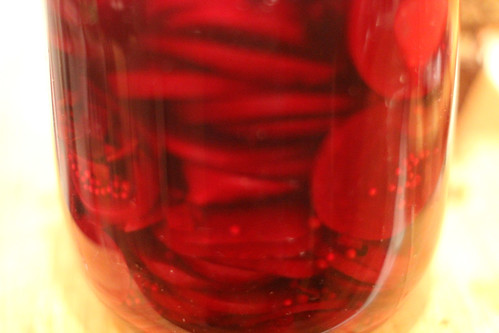
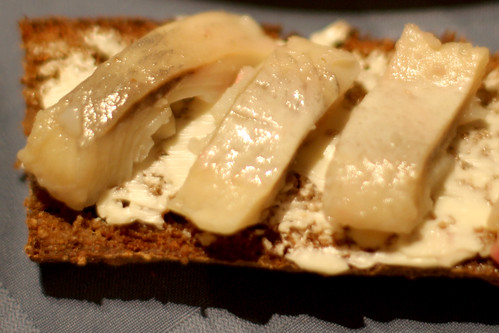
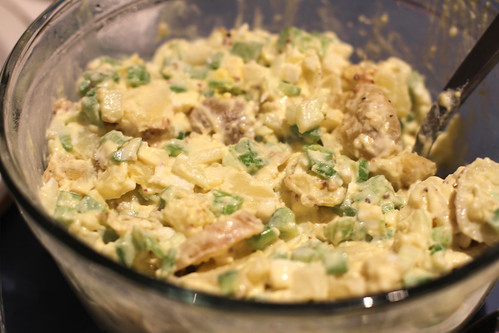















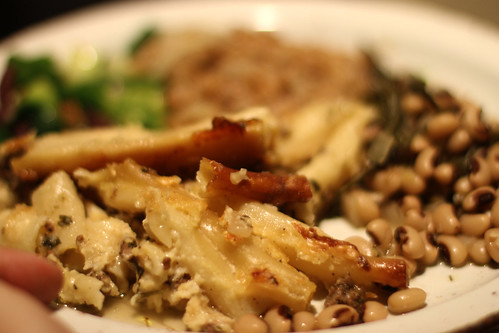
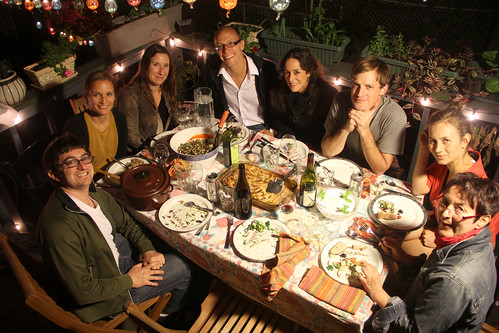 Joining us for this pleasant, post-mosquito night on the back porch, in addition to Iva, were Rachel (who's got a great project going with
Joining us for this pleasant, post-mosquito night on the back porch, in addition to Iva, were Rachel (who's got a great project going with 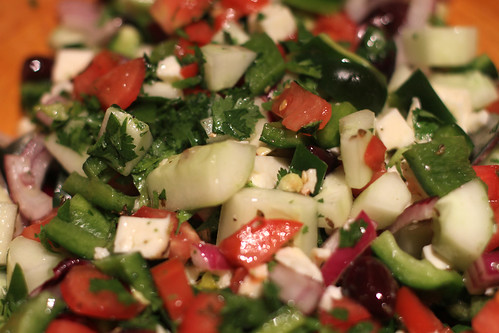 If you've ever had a Greek salad, this is a pretty similar beast, with tomatoes, cucumbers, green peppers, olives and oregano. What makes this Cypriot is the halloumi cheese, which is moister and firmer, and a bit less salty, than feta. Also the dressing is based on lemon juice rather than the vinegar you sometimes see.
If you've ever had a Greek salad, this is a pretty similar beast, with tomatoes, cucumbers, green peppers, olives and oregano. What makes this Cypriot is the halloumi cheese, which is moister and firmer, and a bit less salty, than feta. Also the dressing is based on lemon juice rather than the vinegar you sometimes see.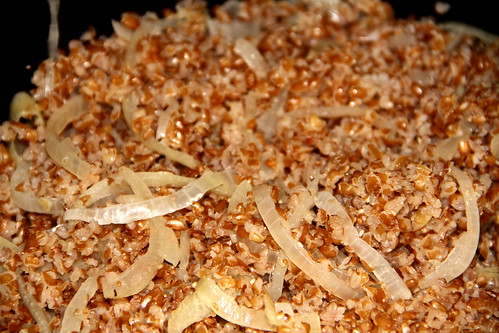 I think I see a bit of Middle East influence in bulgur, or cracked wheat, in this dish! Though the flavor was simple, it was definitely enlivened by some thick yogurt.
I think I see a bit of Middle East influence in bulgur, or cracked wheat, in this dish! Though the flavor was simple, it was definitely enlivened by some thick yogurt. I'd be surprised if it wasn't the Venetians who introduced the pasta used in this casserole which is well known as a Greek dish but which Iva claims is originally from Cyprus. It was certainly tasty, but what was supposed to be a thick and fluffy bechamel of flour, milk and butter was quite runny and kind of drooped down like a cobbler rather than floating on top like a meringue. I think it was my fault for adding the second half of the milk too quickly rather than slowly incorporating it patiently into the pan of milk and flour. Be that as it may this was still plenty yummy.
I'd be surprised if it wasn't the Venetians who introduced the pasta used in this casserole which is well known as a Greek dish but which Iva claims is originally from Cyprus. It was certainly tasty, but what was supposed to be a thick and fluffy bechamel of flour, milk and butter was quite runny and kind of drooped down like a cobbler rather than floating on top like a meringue. I think it was my fault for adding the second half of the milk too quickly rather than slowly incorporating it patiently into the pan of milk and flour. Be that as it may this was still plenty yummy.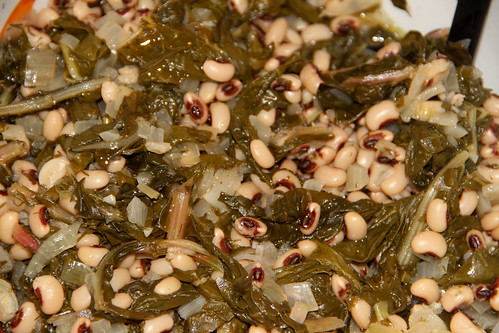 A beautifully rustic combination of legumes and greens. Interestingly, dried black eyed peas cook much more quickly than normal beans, which is good to know if you have limited time. The dish overall was nice and a bit tangy with the lemon, but honestly the leftovers were bolder and in my opinion better when I added red wine, sumac, roasted garlic, Aleppo pepper and more lemon juice.
A beautifully rustic combination of legumes and greens. Interestingly, dried black eyed peas cook much more quickly than normal beans, which is good to know if you have limited time. The dish overall was nice and a bit tangy with the lemon, but honestly the leftovers were bolder and in my opinion better when I added red wine, sumac, roasted garlic, Aleppo pepper and more lemon juice.